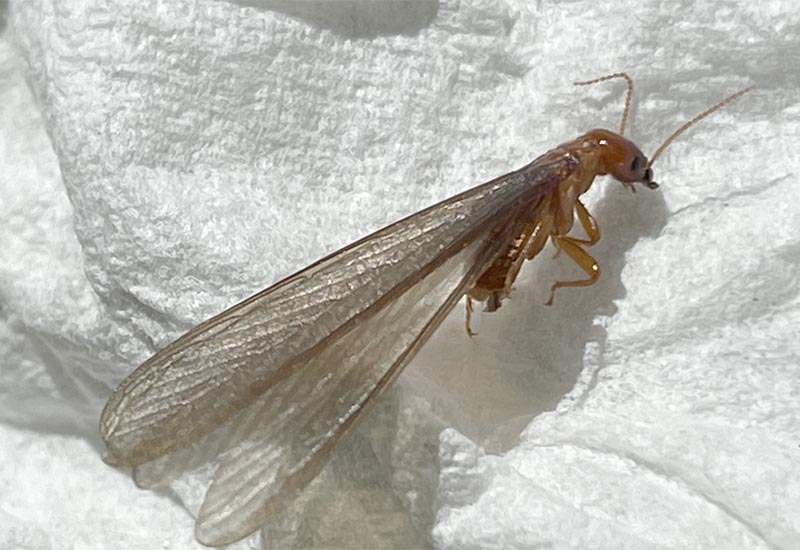
Mistaken Identity in the Garden: Unveiling Insects That Resemble Termites
Termites, those cellulose-consuming social insects, play a crucial role in the decomposition of organic matter within ecosystems. However, their presence within our homes is a cause for concern, as they can wreak havoc on wooden structures. Unfortunately, encountering an insect with an elongated body and swarming behavior can trigger termite panic. But fear not! Several seemingly similar insects share superficial similarities with termites, leading to mistaken identity. This article explores the characteristics of common termite look-alikes and equips you with the knowledge to distinguish friend from foe in your garden.
A Menagerie of Mimics: Unveiling Common Look-Alikes
The most common culprits causing termite confusion are carpenter ants. Both possess a segmented body and exhibit swarming behavior, particularly during mating season. However, a closer look reveals key differences. Carpenter ants boast a constricted “waist” between their thorax (midsection) and abdomen, while termites have a more uniformly broad torso. Additionally, carpenter ants possess elbowed antennae, whereas termite antennae are straight and segmented.
Another potential source of confusion is the click beetle. These fascinating insects possess a unique defense mechanism – the ability to forcefully click their bodies against a surface, launching themselves into the air with an audible snap. While click beetles share the elongated body shape of termites, their hardened exoskeletons and distinctive “clicking” behavior offer a clear giveaway.
The diverse family of longhorn beetles also includes some convincing termite impersonators. These beetles, named for their long, antennae resembling horns, can exhibit body shapes and coloration similar to certain termite species. However, longhorn beetles typically have visible, well-developed mandibles (mouthparts) for chewing, unlike termites whose mandibles are concealed within their heads. Additionally, some longhorn beetle larvae, known as roundheaded borers, can burrow into wood, mimicking termite activity.
Beyond Appearances: Delving Deeper into Identification
While physical similarities exist, a keen eye for detail can reveal the true identity of the insect in question. One of the most reliable indicators is the body structure, specifically the waistline. As mentioned earlier, termites lack a pronounced waist, while carpenter ants and many beetles possess a distinct narrowing between the thorax and abdomen.
Wing morphology also offers valuable clues. Termites have two sets of equal-length wings during their swarming phase, which they shed shortly after mating. In contrast, carpenter ants exhibit a distinctive size difference between their front and back wings, and longhorn beetles often possess long, hard wing casings that cover most of their abdomens when not in flight.
Behavior and habitat preference can also be telling. Termites are primarily subterranean insects, rarely venturing far from their nests built within moist wood. Carpenter ants, on the other hand, forage for food sources above ground and may establish nests within wooden structures. Longhorn beetles are typically solitary and found in a variety of environments, often attracted to flowers or feeding on decaying wood. Observing the activity patterns of these insects can provide valuable clues – termites tend to move in slow, single-file lines, while carpenter ants exhibit a more erratic foraging pattern.
Prevention is Key: Protecting Your Home from Destructive Guests
The best defense against any unwanted insect guest is a proactive approach. Identifying and addressing factors that attract termites and their look-alikes is crucial. Excess moisture around your foundation or within crawlspaces creates an ideal environment for termites. Similarly, decaying wood debris near your home can attract longhorn beetles seeking a place to lay eggs. Regularly inspecting your property for signs of moisture issues and promptly addressing them is vital. Additionally, maintaining proper ventilation in crawlspaces and basements helps deter moisture accumulation.
For confirmed termite infestations, seeking professional pest control assistance is essential. Trained professionals possess the expertise and tools necessary to safely and effectively eliminate termite colonies and prevent future problems.
Conclusion
By understanding the key characteristics and behaviors of common termite look-alikes, you can confidently distinguish between harmless visitors and potential threats. Remember, a closer look at body structure, wing morphology, and habitat preferences can provide valuable clues. Implementing preventative measures like moisture control and proper ventilation helps create a less hospitable environment for these unwanted guests. However, if you suspect a true termite infestation, don’t hesitate to seek professional help to ensure the safety and integrity of your home.






